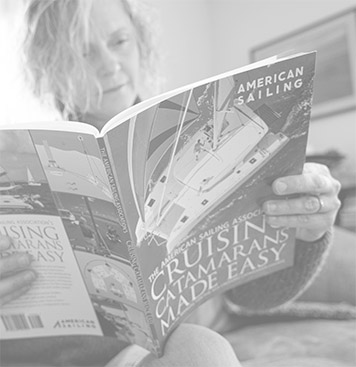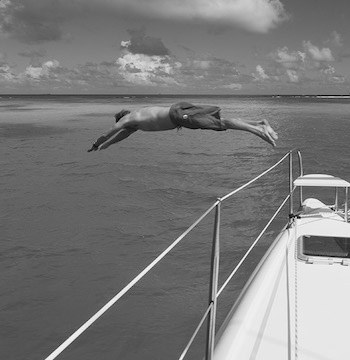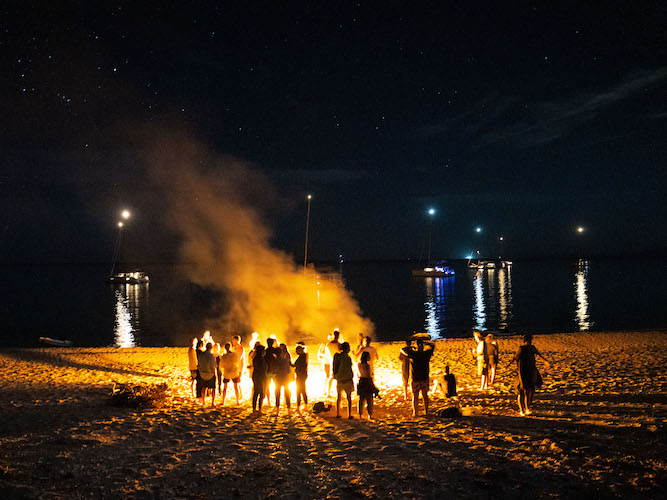How is Catamaran Sailing Different from Monohull Sailing?
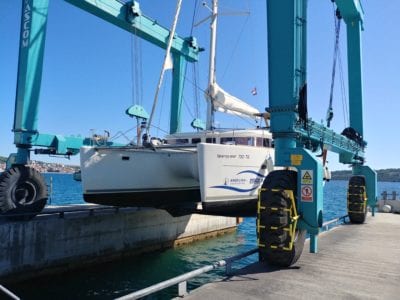
Catamaran sailing is very similar to sailing a monohull in most aspects. If you learn to sail on a monohull, most of the skills are easily transferable. However, there are a couple of subtle differences that one has to be aware of:
- When tacking, you must work hard to maintain your speed throughout the tack and often need to ease your mainsheet to prevent “windvaning”. Windvaning is when the larger mainsail on a catamaran tries to turn the boat back into the wind.
- When gybing on a monohull, you must be very careful of an accidental gybe, and so you gybe much more slowly. When Catamaran Sailing, you can use the increase the speed to your advantage and maintain speed while gybing to help depower the main.
- On a monohull, as winds increase, the boat starts heeling which lets you know that you have too much sail up and it’s time to reef. On a catamaran, because they do not heel, you have to be very careful in terms of when to reef the massive main. Typically, you will throw in the first reef at 18-20 knots of wind speed (depending on the size of your vessel) and put in a second reef as the wind gets closer to 23-25 kts)
Most aspects of Catamaran sailing are very similar to a monohull, so making the transition to Catamaran sailing is usually not that challenging of a process!
Why is Catamaran Sailing?
Catamaran sailing has exploded in popularity in the last 5 years! There are many advantages to catamarans over monohulls.
- Much more space on a catamaran!
- Catamarans are far more stable than monohulls so they do not heel when sailing, and are less prone to rocking when at anchor. Making for a much more comfortable boat!
- Catamarans have a shallow draft which allows them to enter shallower areas. In the South Pacific, most lagoons are 6-8 feet deep. This is too shallow for monohulls to enter, but a catamaran can easily enter these lagoons.
- Speed: Often, especially downwind, catamarans are faster than monohulls
- More light and airy living area. On a catamaran, the living space is usually up in the middle of the boat, built on the bridge deck whereas in a monohull you go down into the hull where it is darker and feels less open.
- More storage space and room for extra systems like air conditioning, water makers, generators, larger fridges and freezers, etc… Again, having room for all these amenities makes for more comfortable living.
What is a Catamaran?
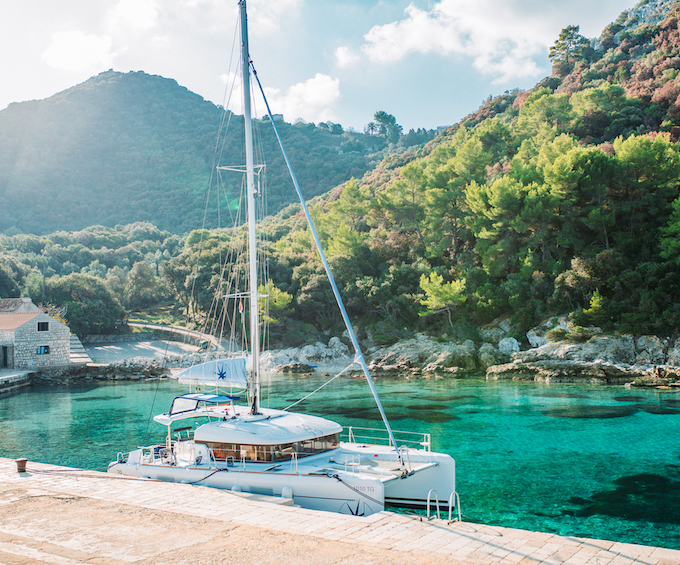
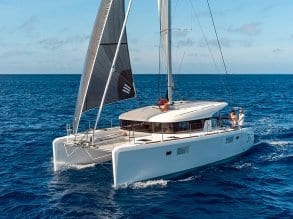
A catamaran is a sailboat with two hulls. These two hulls are connected by a bridge deck. Many people will be familiar with Hobie cats, small catamarans that are popular for sailing on lakes and in calmer waters. Catamaran Sailing are based on this same principle but have large hulls that can fit many cabins inside, and house large structures on the bridge deck (like a galley, salon and living area).
Is Catamaran Sailing Safer Than Monohull Sailing
Great question! Catamarans are much more stable than monohulls, and so people are less likely to fall overboard, which does make them safer in this aspect. They are larger, more stable boats, and so in most situations, this will make them a “safer” sailboat than a comparably sized monohull.
Catamarans also have the advantage of having 2 engines, which makes them “safer” when it comes to engine problems. On a monohull sailboat, if you have major engine problems you only have the option of sailing. On a catamaran, you always have a second motor ready to help out in an emergency!
Is Catamaran Sailing Easier Than Monohull Sailing?
What makes monohulls harder to sail is heeling and more confined spaces. In stronger winds, monohulls heel, making most tasks a little more difficult to manage. Whether you are going forward to the reef, trying to winch in a sail or moving about the boat, sailing on a heeling boat is more challenging. Catamarans, however, because of their extra stability and room, allow for much easier movement around the boat as they do not heel. For this reason, catamarans are often considered “easier” to sail.
Can a catamaran cross the Atlantic?
Definitely! Early on many catamarans and trimarans were home-built from kits, and many of these boats gave catamarans a bad rap for offshore sailing. For decades now the major catamaran manufacturers have been improving these amazing vessels, and now catamarans are safe, stable and fast on offshore passages. In 2020 we completed an Atlantic crossing in our very own Never Say Never Lagoon 400S2 catamaran.
How fast does a catamaran sail?
Not all catamarans are created equal. Many of the production catamarans like Lagoon, Fountaine Pajot and Leopard are designed for cruising. This means that they are willing to sacrifice some performance in the interest of comfort for their owners and crew. These boats still are often faster than a monohull of comparable size when on a beam reach or downwind point of sail, often seeing speeds in the double digits. Upwind, catamarans do not usually have the same ability to point into the wind (as they have shorter, stubbier keels) and do not travel as quickly.
Some high-performance catamarans from manufacturers like Outremer, Gunboat and HH, make incredibly fast catamarans that can achieve speeds in the high teens and low 20s under ideal conditions.
Want to learn more?
Learning to sail a catamaran has its differences from learning to sail a monohull. If you are planning on sailing catamarans, then it’s best to spend a week onboard one learning how to sail and operate these vessels. We offer catamaran sailing courses in the Grenadines (Caribbean), Sea of Cortez (Mexico), Mallorca (Spain) and Tahiti (South Pacific).
Want to learn how to sail a catamaran?
Our week-long live-aboard courses truly are an incredible experience! You will spend the week learning over 100 different skills and learn to comfortably sail and operate the vessel. Upon successful completion of the course, you will earn ASA certification 101, 103, 104 and 114 (up to Cruising Catamaran certification) which allows you to charter catamarans internationally.
This intensive course will give you the knowledge, skills and experience to charter catamarans, or help you set sail on your vessel! All while having a blast, snorkelling, hiking and exploring exclusive bays.


